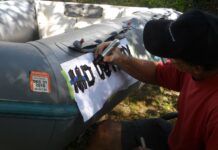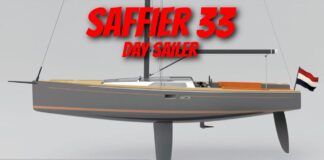Teak has for years been the wood of choice for marine use, although the trend towards the elimination of exterior teak appears to be accelerating. Teak is a naturally oily wood, which is extremely resistant to rot. It’s dimensionally stable, which is an important consideration for a wood that’s expected to stand up to the rigors of marine use. It’s hard enough to withstand the abrasion and scuffing that take place on a boat. And it’s an attractive wood with a pleasant grain and a gold-to-brown color when freshly sanded that fades to a silvery gray-white that can also be good looking—as long as your boat spends its time in regions with little or no air pollution.
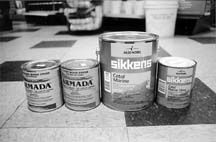
In the real world, however, such regions are extremely rare, particularly in or near heavily populated areas. Soot, dust, acid rain and smoke all conspire to turn teak an ugly gray/black in a depressingly short time. There are only a few things that can be done about it. Paint the wood, which gives a durable finish, but defeats the whole purpose of having teak in the first place. Devote a noticeable chunk of your life to scrubbing and bleaching, which does neither your temper nor the teak any good. Or, apply a barrier—an oil, or stain or varnish.
Types of Teak Treatments
Bare teak is attacked primarily by sunlight, water and airborne fumes and particles. Water can cause the wood to swell and check, while the ultraviolet (UV) component of sunlight breaks down the lignin in the wood. Lignin bonds the cellulose fibers of the wood together; when the lignin is destroyed, the wood decomposes. Pollutants in the air speed up this decomposition, and also can stain the wood. If a coating is interposed between the wood and the environment, things become simpler. Because most coatings are fairly immune to attack by water and most pollutants, the main problem becomes that of keeping the coating intact. That devolves into how successfully they deal with UV. A secondary problem, assuming that the coating survives, is that of UV transmission through the coating, causing the wood to degrade. In the past, this hasn’t been much of a problem—none of the older teak treatments lasted long enough for it to show up.
There are only a few basic ways to attack the problem, though the approaches may overlap to some degree. One can apply an oil, pigmented stain or some sort of varnish over the teak. Oils, in our experience, can make a clean, freshly sanded piece of teak look beautiful…for a short time. They’re typically gone in a few months of even mild UV exposure. If you don’t wait until the wood surface under the oil begins to deteriorate, oils are easy to re-apply, but if you go that route, you’d better be prepared to re-oil the surface several times each year. Once the wood starts to discolor, you’re committed to a tedious job of bleaching and/or sanding the teak before you apply a new treatment (oil or otherwise).We’re of the persuasion that most boat owners have better things to do with their time than oil teak; we haven’t included any oils in this project.
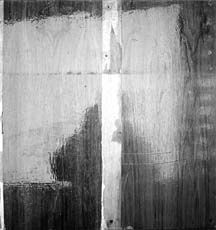
Pigmented stains vary from pigmented oils to pigmented film-formers (though not nearly as thick and solid a film as you can get with a varnish). These stains get most of their UV resistance from solid particles of pigment suspended in the stain, which act as miniature parasols, physically blocking light transmission through the coating. Consequently, pigmented stains can have a relatively long life, lasting from one to three years without the need to recoat. Recoating, if you don’t wait until there’s noticeable wood discoloration, is easy. Just wipe on another coat of the low-viscosity stain, taking care not to get any on your nice white fiberglass (they’ll stain that, too, and the stains are very hard to remove).
Like most things in life, there’s a downside to pigmented stains. Where an oil (or a varnish, for that matter) brings out the natural grain of the teak, a pigmented stain partially hides it. The more pigment, the better the protection, and more hiding occurs. Pigmented stains have become extremely popular since Azko Coatings introduced Cetol Marine less than 10 years ago. Cetol has since been joined by Armada, Woolsey Protective Wood Coating, Burgess HydroGuard and WoodMate.
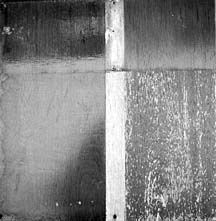
More and more boat owners seem to have decided that a slightly “painty” appearance is a small price to pay for the freedom from frequent re-application. With the exception of Burgess HydroGuard and some WoodMate treatments, all the pigmented stains we tested are oil-based. HydroGuard is water-based. This makes clean-up easier, but we found that HydroGuard’s durability wasn’t up to the high standard set by the others. WoodMate makes gloss and semi-gloss stains with both water- and oil-bases. The two we tested last year performed only Fair, and just as we were going to press with this issue, we learned that WoodMate is reformulating all its products. We left the old products on the chart.
Pigmented stains don’t produce much in the way of a visible build-up on the wood. Varnishes do, providing a clearly visible coating with either a gloss or semi-gloss appearance. Strictly speaking, most of these products aren’t true varnishes. A traditional varnish dries in two stages: first by solvent evaporation, and then through a reaction with oxygen in the air that causes the relatively small molecules in the varnish to combine into huge molecules. The products we tested utilize a variety of drying (or curing) mechanisms; they all provide a clear film build-up on the teak. It is convenient to call them varnishes, although chemists may well object.
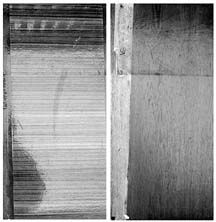
This year’s tests include two new (to us) single-part systems: Sav-Cote and Armada MC-2000. The last is interesting because it’s a polyurethane that cures by combination with moisture in the air.
We also re-tested Burgess HydroGuard and HydroVarnish, a water-based varnish that is sold as a topcoat for HydroGuard. This year we tried HydroVarnish as a topcoat and both HydroGuard and HydroVarnish as stand-alone treatments.
Smith & Co. Five-Year Clear™ is a complete system, consisting of a two-part epoxy basecoat (CPES™ or clear penetrating epoxy system) and a two-part polyurethane topcoat. It now is formulated for an easier 50:50 mixing ratio; kits are supplied with a reducer for spray or brush application.
Honey Teak also uses a two-component basecoat and another two-component topcoat—both polyurethanes. Bristol Fashion, a newcomer to our test program, uses a two-component polyurethane, but dispenses with separate base and topcoats.
Last year, we reported disappointing results from Teak Shield Satin and Teak Shield Gloss, described by the manufacturer as two-component fluoropolymers. At the manufacturer’s request (he thought we might have used some outdated material), we tried again, on both teak plywood and on a teak board. This time we obtained much better results, at least over six months’ exposure.
Both Teak Shield products require mixing a curing agent (called a “crosslinker” to the product at a 1:32 ratio—an inconvenient ratio, we think, if you don’t want to mix the entire contents at the same time. Pot life is 4-6 hours, so it takes a bit of planning if you want to apply the recommended two coats before the material sets up in the can.
Also tested were a few products that straddle the fence of pigmented stain/varnish: Armada Gloss and WoodMate Gloss (oil/alkyd) and WoodMate Gloss (water). They’re best described as varnish stains (or semi-transparent paints). All three provide a glossy or semi-gloss finish, because they both contain pigment like their matte-finish siblings.
The Tests
As usual, testing was simple. Each product was applied to freshly sanded teak plywood panels measuring 1′ x 1-1/2′. Instructions calling for special surface prep were followed.
Following last year’s tests, a couple of manufacturers questioned our use of teak plywood rather than solid teak. Some years ago, we did test with both and found that teak treatments perform comparably on teak plywood, teak lumber and weathered teak. To double check, this past year we again took some teak lumber and duplicated the applications we had made on plywood.
One-third of each panel was covered with a sheet of aluminum flashing. This gave a completely opaque mask, so that we could compare the finish of panels before and after weathering. Each panel had a few holes drilled in it, so that we could check for water seepage under the protective coating. Lastly, we put a drop of water on each panel while it was in a horizontal position. Before exposure, the water formed a bead, showing that the surface film was intact; after exposure, on samples that failed, the water spread out into a wide thin puddle.
The panels were left out in the New England weather for six months, oriented to the south, and tilted to 45 degrees to maximize exposure to sunlight. Panels that had survived previous testing were allowed to continue their exposure; each panel’s total exposure time is shown on the chart.
Results
Four of the pigmented stains continued to hold up well, though it’s beginning to look now, after 3-1/2 years, as if another application of Cetol is due. The Armada and Woolsey Protective Wood Coating both look very good-to-excellent after a year of exposure. That’s impressive. Manufacturers recommend yearly maintenance coats. All of these four pigmented stains still caused water to bead on their surfaces. The fourth pigmented stain, the water-based Burgess HydroGuard, once more failed to survive a six-month exposure. The two WoodMate semi-gloss products are holding up well after six months, although the water-based version is showing some early indications of potential failure. Unfortunately, the results are moot as the company is replacing them.
The glossy Smith & Co. Five Year Clear™ and Honey Teak have passed a 3-1/2-year exposure still looking very glossy. Both exhibited color changes. The Smith & Co. system has darkened considerably. Under the protective aluminum cover, the panel had a pleasant light color; the exposed portion of the panel darkened considerably. Honey Teak, on the other hand, lightened somewhat with time. Bristol Fashion, a third finish that displayed excellent initial gloss remained virtually unchanged after weathering, but its total exposure was only 6 months; we’ll have to wait on this one.
The two new one-component varnishes—Armada MC 2000 High Gloss Mastercoat, and Sav-Cote—also had very high initial gloss. The MC 2000 had almost no color when it dried, producing the lightest colored panel of those tested. Our testers had mixed feelings about this; it definitely provides a different look, though some traditionalists may have trouble getting used to it. It was convenient to use (easy brushing with no mixing), but once the can is opened it seems to have a limited storage life. After six months, Armada MC 2000 looks fine.
Sav-Cote, on the other hand, didn’t look fine after six months. The surface was badly checked, and it failed our water bead test. The manufacturer said that although Sav-Cote is recommended for wood, as well as other surfaces, they have a product called Teak Topcoat that’s intended specifically for teak. It will be added to the list of products for next year’s tests.
Several other products provided glossy surfaces. Teak Shield, upon retesting is holding up well, as is its semi-gloss brandmate. We had observed poor weathering resistance from these two products last year, but this year we received and applied fresh samples, which at six months have improved markedly. These products were also tried on teak lumber; results so far are the same as observed on plywood.
Burgess HydroVarnish, applied by itself, has held up well after six months; as a topcoat for HydroGuard, it was less impressive. Still, we’d have to say that HydroVarnish seems to be among the best water-based varnishes we’ve tested.
Armada Gloss had outperformed WoodMate Gloss in our previous round of tests, even though the Armada had been exposed for 12 months and WoodMate for only six. Now, after another six months, the Armada still looks good. All four WoodMate products were reapplied, so they’ve only had six months of exposure, but will be pulled from the test in favor of WoodMate’s new formulations.
Conclusion
Based on our long-term tests, we still recommend Cetol as a matte finish. It seems to have a trifle greater longevity than Armada semi-gloss. The Armada tested has been reformulated for a less orange color; it has only 18 months of exposure, but seems to behave much like the previous formulation, which was good, if not quite as durable as Cetol. Woolsey Protective Wood Coating, after 18 months, is also promising if you don’t like glossy teak. Burgess HydroGuard was by far the weakest performer among the pigmented stains.
The impressive gloss treatments over the past few years have been Smith & Co.’s Five-Year Clear™ (on top of CPES™) and Honey Teak. Except for the color change noted above, both look like they’ve just been applied, after 3-1/2 years. Initially, our favorite was the Smith & Co. system, which combined a deep gloss with a very attractive color. This system (we can’t really call it a product) does have its disadvantages. It requires a lot of mixing as the pot life is shorter than the required interval between coats and application must be done under completely dry conditions, which can present a problem for outdoor application. And the manufacturer cautions that it can’t be simply recoated after it begins to fail. It’s necessary to strip the surface down to bare teak—not a job we’d relish.
Honey Teak, on the other hand, requires a shorter time between coats, so that you can get two or more coats from one mix. It’s also much more tolerant of moisture, and discolors less upon aging (the lightening we observed tends to improve the looks of the yellow-gold color seen on initial application. Possibly most important, Honey Teak’s manufacturer said that it can be recoated at any time without stripping. At this time, we give the edge to Honey Teak.
Bristol Finish, claims to be very similar to Honey Teak and looks good in our initial tests (but it has only been exposed six months). We’ll be watching it in the future, as we will Teak Shield Gloss and Semi-Gloss.
Contacts- Armada, Armada Coatings, PO Box 879, Havre de Grace, MD 21078; 800/336-9320. Bristol Finish, C-Tech Marine, 489 Ballard Dr., Melbourne, FL 32935; 800/582-7508. Burgess, Derco, Inc., 200 East Joppa Rd., Suite 206, Baltimore, MD 21286; 410/494-0979. Cetol Marine, Azko Coatings, 1845 Maxwell St. ,Troy, MI 48084; 800/833-7288. Honey Teak, Signature Finish, PO Box 1041, Port Salerno, FL; 561/287-6077. Sav-Cote Chemical Labs, PO Box 770, Lakewood, NJ 08701; 888/274-2474. Smith & Co., 5100 Channel Avenue, Richmond, CA 94804; 510/237-6842. Teak Shield, Shield Products, PO Box 56768, Jacksonville, FL 32241-6768; 904/730-7789. WoodMate, Noble House Coatings, 262 Progress Avenue, Scarborough, Ontario, Canada M1P 2Z4; 416/332-9393. Woolsey/Z-Spar Marine Paint, 36 Pine Street, Rockaway, NJ 07866; 800/221-4466.


















